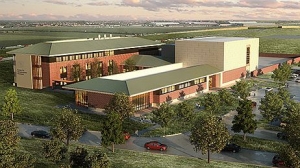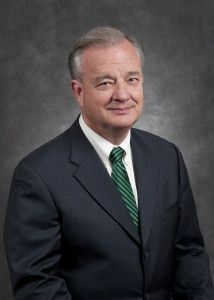
The Texas A&M University System has had a goal of “leading change in the world” for a very long time. Lately, however, it seems that progress toward the goal is in overdrive.
The university’s latest contribution to leading change is an effort to create a premier public-private research, technology development and education complex. If there are Texans who have not yet heard of the RELLIS campus, that’s about to change.
A&M has given a nod to its six core values – respect, excellence, leadership, loyalty, integrity and selfless service – by including the acronym (RELLIS) in the name of its newest endeavor. The Texas A&M RELLIS Education and Research Campus was created to initiate a new paradigm for collaboration between the public and private sectors. The objective behind the new campus plan is to create partnerships to design, develop and test new technologies at a campus dedicated to research, testing and workforce development.

Center for Infrastructure Renewal. Photo courtesy of Texas A&M University System.
Announced last May, the 2,000-acre RELLIS campus is a redevelopment of the A&M Riverside Campus and will be a high-tech, multi-institutional campus that works with private-sector firms to improve the rate at which products are brought to market. That objective will remain but with more resources and a greater impetus.
When the transformation of the Riverside Campus to the RELLIS Campus was announced last year, Chancellor John Sharp said the university would “enhance and expand the current research capabilities, provide more opportunities for education and training and foster industry partnerships.”
Noting that “too many good ideas die somewhere between labs and the market,” Sharp said the RELLIS campus will help ensure that viable new designs and concepts are not constrained because of a lack of money or state-of-the-art facilities.
A&M regents authorized an initial commitment of $150 million to the project, which will feature seven new buildings and training centers, upgrades to some existing facilities and improvements to infrastructure, including roads as well as utilities.

Chancellor of the Texas A&M University System John Sharp. Photo courtesy of Texas A&M University System.
Last September, the university held a groundbreaking for the first of seven new buildings planned for the campus – the $73 million, 138,000-square-foot Center for Infrastructure Renewal. Hoping to reduce costs and extend the life of the nation’s infrastructure, the center will collaborate with the Texas A&M Engineering Experiment Station (TEES) and a number of private-sector firms to research, experiment and ultimately develop improved materials and construction methods.
The RELLIS campus will examine numerous hot-button issues, including robotics and unmanned vehicles, advanced manufacturing, large-scale testing, “smart” power grids, digitized water systems and driverless, connected vehicles. Much of the effort will depend on public-private partnerships (P3s).
By encouraging private firms to construct their own research and development facilities adjacent to the RELLIS campus, A&M officials hope to create a symbiotic relationship between the university and private-sector partners. There will be great benefit to both parties. Private-sector firms will not only be able to interact with top-tier students as well as university researchers and professors, but they will also be able to collaborate with other engineering and technology tenants. Students will have the advantage of being exposed to new technology, collaborative innovations and cutting-edge research from private-sector firms.
Another emphasis at the campus will be a focus on workforce development. Students will be trained to become great assets to technology companies interested in locating in Texas or anywhere else. A trained, skilled workforce is, without doubt, the bedrock of a region’s economic prosperity.
Three agencies already involved in research and testing projects that previously were a part of the Riverside campus will remain at the new RELLIS site – TEES, the Texas A&M Engineering Extension Service (TEEX) and the Texas A&M Transportation Institute (TTI). There are new construction plans for each of those entities.
The RELLIS campus is indeed an example of how Texas A&M hopes to lead change in the world. Here, vision becomes reality.
* * * * * * * * * * * * * * * * * * * * *
Additional allocations for RELLIS campus facilities
- $73 million authorized by the Texas Legislature for a Center for Infrastructure Renewal to develop new methods and better materials to address the country’s deteriorating infrastructure and to train the private sector in application of new techniques and materials;
- $12 million for a Cyber-Physical Research and Development Center to examine robotics, autonomous and connected vehicle technologies and associated aspects of cybersecurity;
- $9 million for a TEES Headquarters and Research Center for TEES researchers and staff;
- $6 million for a Safety Process Center to develop safety methods for operation in large chemical operations. The Mary Kay O’Conner Process Safety Center will research and develop safer processes, equipment, procedures and management strategies in the processing industry;
- $6 million for an Industrial Distribution Center to determine the best way to manufacture and distribute products and include the first distribution-focused research center in the world as well as the Global Supply Chain Laboratory and the Talent Incubator;
- $7 million for a TEEX training facility that will focus primarily on law enforcement;
- $12 million for an Advanced Research in Transportation Technology Building where research, design and testing will be undertaken related to automated and connected vehicles.
SPI’s newsletters are excellent sources of government procurement information. Subscribe here.
